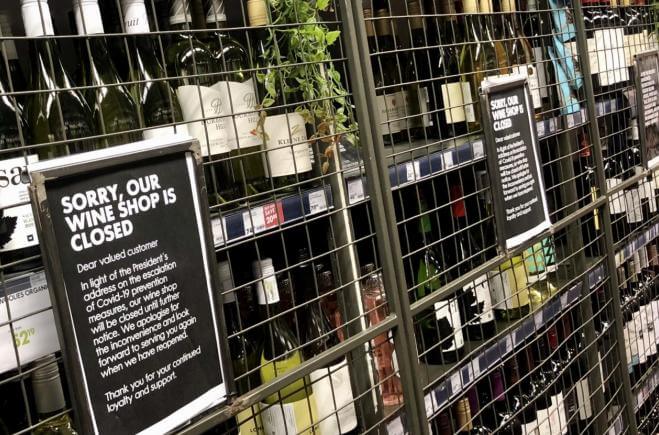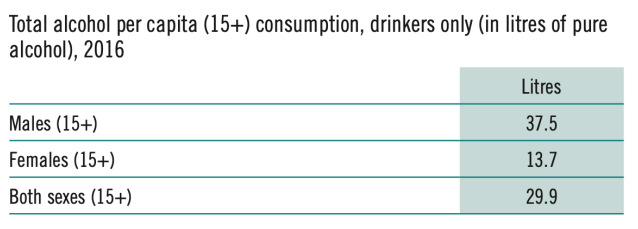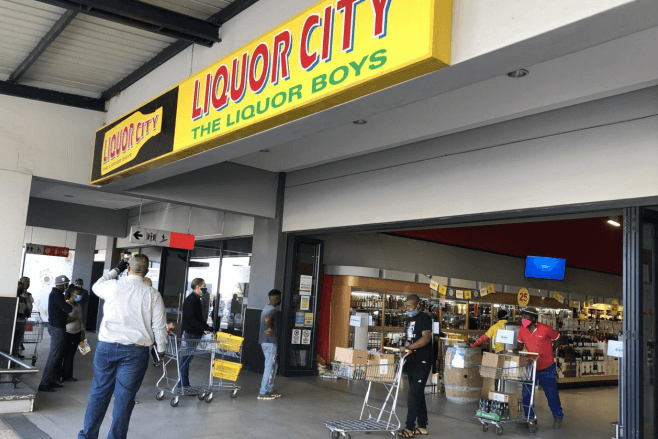December 31, 2020, data released by the South African Ministry of Health have reached a total of 1057,161 confirmed cases of COVID-19 in South Africa, 28469 deaths, a total of 879,671 cured people, and 149,021 existing cases.
In December 2020, South Africa added a total of 267,157 new confirmed cases of COVID-19 and 6,934 new deaths in this month, both of which showed an upward trend. On the last day of 2020, South Africa recorded a record number of new confirmed cases in a single day, reaching 18,000.
After the number of confirmed cases of COVID-19 in South Africa exceeded one million in late December 2020, President Ramaphosa delivered a speech on the serious epidemic prevention and control situation and announced a series of epidemic prevention and control adjustment measures, including the third nationwide ban on alcohol dealers.
As early as April and May, shortly after the outbreak began, South Africa, under the highest level 5 blockade, banned local market liquor sellers for the first time.
After the lockdown in South Africa was downgraded to level three on June 1, 2020, alcohol buying and selling alcohol were allowed on Thursday.
However, on July 12, 2020, due to the increase in confirmed cases of COVID-19 and the shortage of hospital beds, South Africa banned the sale of alcohol commodities for the second time nationwide. The ban was not lifted until the blockade in South Africa downgraded to level two on August 17, 2020.
But as with the first lifting, only merchants are allowed to open for sale alcohol on Thursdays. The third ban is until December 29, 2020, and the current ban continues until January 15, 2021.

According to the 2018 Alcohol and Health Research Report released by the World Health Organization, alcohol has been identified as an important risk factor for inducing different forms of harm.
It can cause people to suffer unintentional injuries such as traffic accidents, drowning, burns and intentional injuries in the form of suicide and domestic violence.
The report examines the drinking of alcohol in the world in 2016, showing that distilled wine was consumed the most globally in 2016 (44.8% of the annual average), followed by beer (34.3% of the annual total), followed by wine (11.7% of the annual total), and finally other alcoholic beverages.
In South Africa, the data for 2016 is the most popular beer, accounting for 56% of the average annual consumption, and distilled wine and wine account for 18%.
The report’s survey of alcohol consumption in South Africa in 2016 also shows that the average male consumers aged 15 in South Africa who drink alcohol is equivalent to 37.5 litres of pure alcohol a year, female consumers over the age of 15 drink 13.7 litres of pure alcohol, and the average consumption of men and women is 29.9 litres.
South Africa ranked sixth in the world in annual alcohol consumption of consumers in 2016, which also proves the love of drinking by South Africans.

Facing the reality of the worsening epidemic in South Africa, the South African Medical Association and the Democratic Nursing Organization of South Africa outh Africa) both expressed support for the government’s strict order to stop the sale of alcoholic commodities in the local market, believing that this measure will help alleviate South Africa’s already overburdened health care system.
The number of COVID-19 patients who are already limited in medical resources need to be placed during the epidemic, and the injured patients caused by drunk driving and drunken violence incidents are undoubtedly competing with COVID-19 patients, which is also the main reason why the local market is prohibited from buying and selling alcohol commodities in South Africa at the current epidemic.
South Africa’s health minister Zweli Mkhize previously said that the first “prohibence” reduced the number of drunken-related injuries admitted to hospitals by 60 to 70%. The South African Medical Research Council believes that the two-month ban guarantees nearly 13,000 patients with COVID-19 to be treated in intensive care.
Data released by the Western Cape Province, where South Africa’s famous tourist city of Cape Town, also show that after the resumption of the local market, the number of alcohol-related injuries admitted to alcohol in the hospital intensive care unit in a single day is more than threefold than during the ban.
On the other hand, the Beer Association of South Africa is concerned that the large number of job losses in the industry caused by the ban on alcohol sales and the increasing illegal trade disrupt the normal industry market order.
Before the outbreak, data from the World Health Organization showed that 24% of the alcohol consumed by South African consumers throughout the year was purchased from illegal liquor dealers.
In addition, according to the South African Liquor Brand Owners Association, illegal liquor trade in South Africa costs the legal liquor industry 12.9 billion South African rand every year, due to illegal transaction tax evasion, in other words, the South African Treasury loses 6.4 billion South African rand a year.
The ban during the epidemic also caused many South African consumers to rush to buy pineapples and brew their own beer at home. The rush to buy pineapple market prices twice as much as before the epidemic.
What’s more, there are frequent incidents of beatings, smashing and looting of legal liquor stores. Illegal liquor goods are illegally sold on the black market at twice or three times the normal price.
The ban on legal trading during the epidemic is bound to lead to illegal trading taking advantage of loopholes. Given that the previous two Prohibitions have caused heavy damage to the local beer industry, losing 14.2 billion South African rand of sales and forced the closure of 30% of breweries, the South African Beer Association believes that the third ban will cause incalculable damage to the industry and the lives of more than 400,000 people in the industry. The plan is to add insult to injury.
Not only the beer industry, but also the entire South African wine industry involves the brewing, wholesale and retail of beer, wine, distilled wine and alcoholic beverages. It can be said that the “prohibition” affects the livelihoods of millions of people.
In his national speech, South African President Ramaphosa said that he knew the importance of the alcohol industry in South Africa’s economy, but given the severity of the epidemic and the pressure on the health care system caused by the dangerous behaviors of a large number of alcoholics, the government had to order again ban the sale of alcohol goods in the local market.
Ramaphosa stressed that South Africa must put “saving lives” first. At this moment, every device, every bed, every medical staff and every oxygen tank in the hospital should be used on the “blade” to allow more patients with COVID-19 to be treated and recovered and discharged from the hospital.



